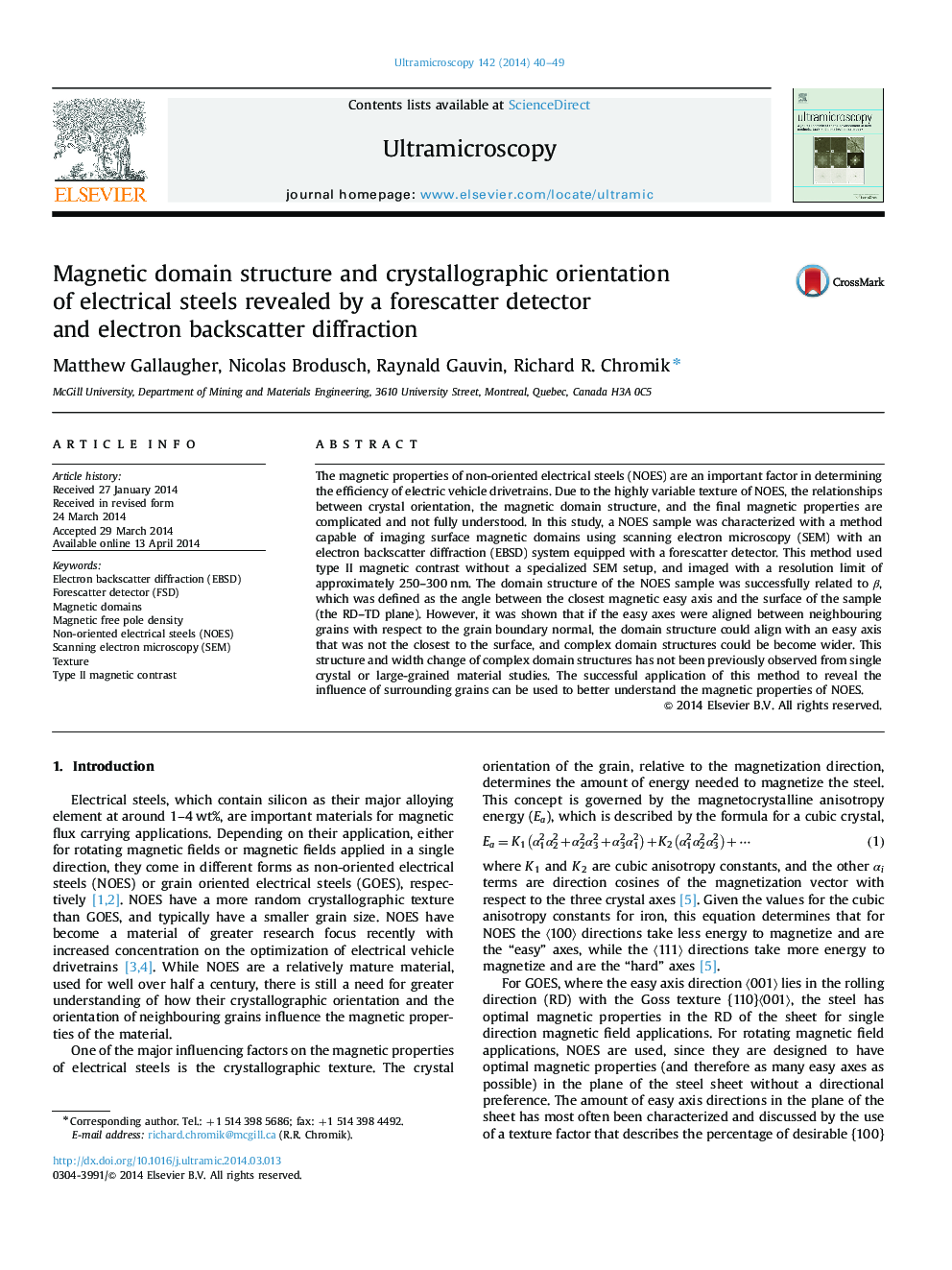| Article ID | Journal | Published Year | Pages | File Type |
|---|---|---|---|---|
| 1677424 | Ultramicroscopy | 2014 | 10 Pages |
:•Magnetic domains and orientation of NOES was studied using an SEM.•Type II magnetic contrast was used, with a FSD on an EBSD camera.•The domain structure was related to the orientation of the magnetic easy axis.•The domain structure was influenced by the orientation of neighbouring grains.
The magnetic properties of non-oriented electrical steels (NOES) are an important factor in determining the efficiency of electric vehicle drivetrains. Due to the highly variable texture of NOES, the relationships between crystal orientation, the magnetic domain structure, and the final magnetic properties are complicated and not fully understood. In this study, a NOES sample was characterized with a method capable of imaging surface magnetic domains using scanning electron microscopy (SEM) with an electron backscatter diffraction (EBSD) system equipped with a forescatter detector. This method used type II magnetic contrast without a specialized SEM setup, and imaged with a resolution limit of approximately 250–300 nm. The domain structure of the NOES sample was successfully related to β, which was defined as the angle between the closest magnetic easy axis and the surface of the sample (the RD–TD plane). However, it was shown that if the easy axes were aligned between neighbouring grains with respect to the grain boundary normal, the domain structure could align with an easy axis that was not the closest to the surface, and complex domain structures could be become wider. This structure and width change of complex domain structures has not been previously observed from single crystal or large-grained material studies. The successful application of this method to reveal the influence of surrounding grains can be used to better understand the magnetic properties of NOES.
